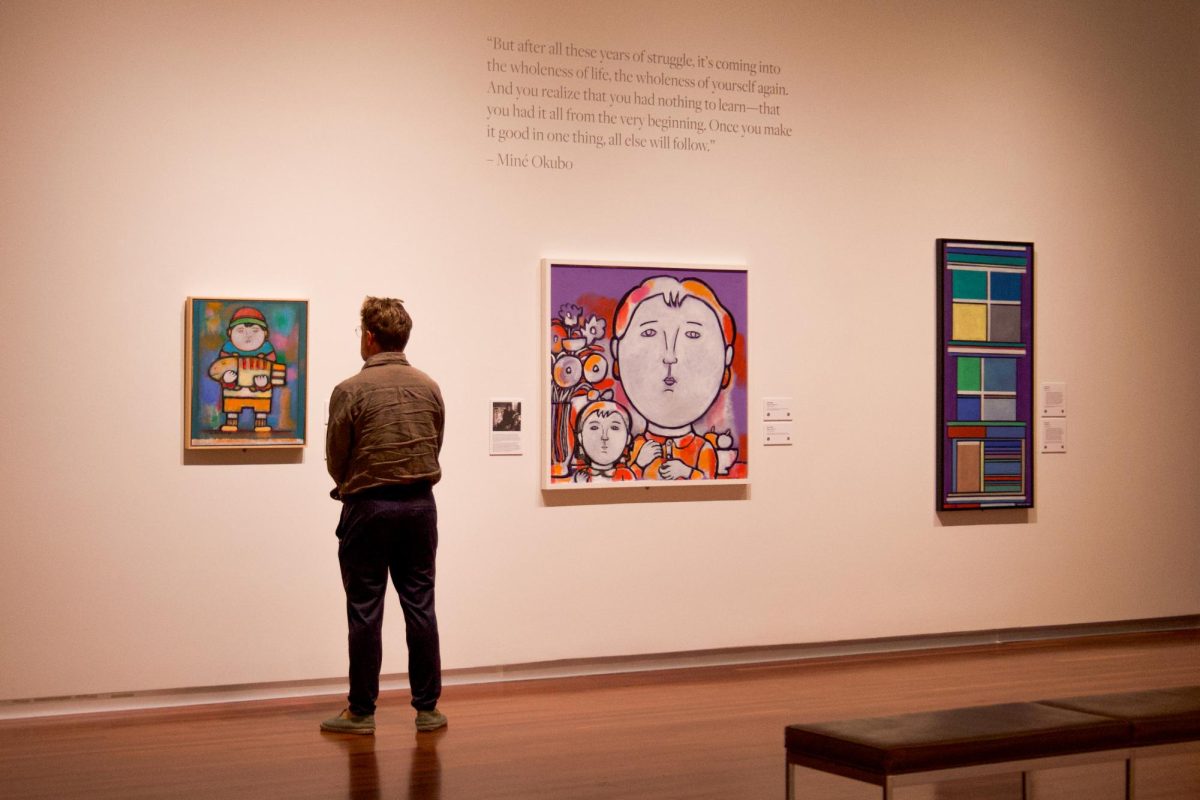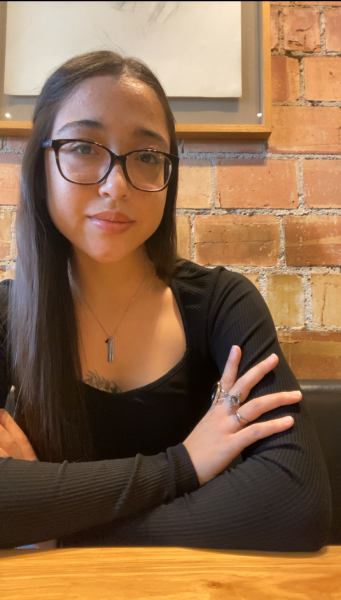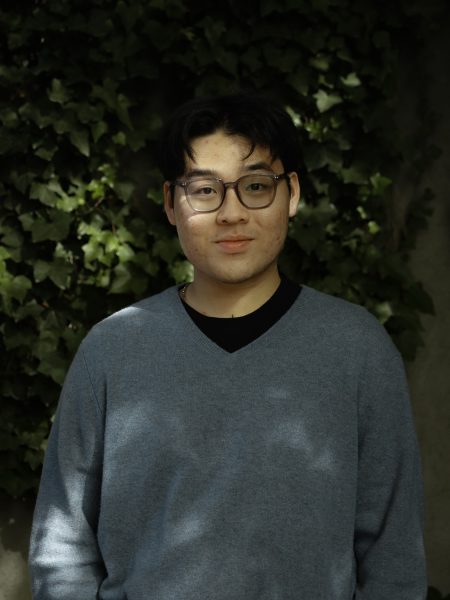“Pictures of Belonging,” an exhibit currently being displayed in the Utah Museum of Fine Arts, honors the work of Miki Hayakawa, Hisako Hibi and Miné Okubo, three females of Japanese descent who lived throughout the World War II period when those of Japanese descent were heavily suppressed.
Seventy-nine years later, these women are now being celebrated, solidifying their belonging.
The display of this exhibit at the University of Utah is particularly powerful given Utah’s dark history of the Japanese internment camp Topaz.
A Window to the Soul
Miki Hayakawa emigrated to the United States from Hokkaido, Japan, and studied art at the California School of Arts and Crafts and the California School of Fine Arts in San Francisco.
While one of her most acclaimed paintings is a landscape piece —”From My Window” (1935) — her portraits are what stand out to me. Despite Hayakawa believing that artists should not express any anger — once stating, “If I have any unkindness in my heart, I don’t dare take a brush and paint” — she does not shy away from expressing emotion.
She uses a lot of dark shades and shadows in her work, giving it a somewhat melancholy undertone. Her technique differs based on how she’s painting the subject and what she’s trying to portray. In her portraits of the subject in their environment, the picture is just a little bit fuzzy, the hard lines just a little bit blurred, allowing her to portray a scene and capture a feeling. In her portraits of solely a headshot, the picture is perfectly clear. The eyes of her subject stand out allowing her to perfectly portray the person.
It is in these portraits that I think Miki Hayakawa created her best work —”Angie” (1948-51) is my personal favorite. A portrait of a little girl (the painting was once called “Little Angie”), Hayakawa paints her in extreme detail. While she still uses darker shades, the shadows don’t wash out the subject like they do in her other portraits. What strikes me most is the big, clear eyes staring right at the observer, almost as if they can see right through you. Filled with sadness, despair, and possibly even a little bit of hope, Angie’s eyes are filled with a myriad of emotions that I could spend forever looking into trying to decipher.
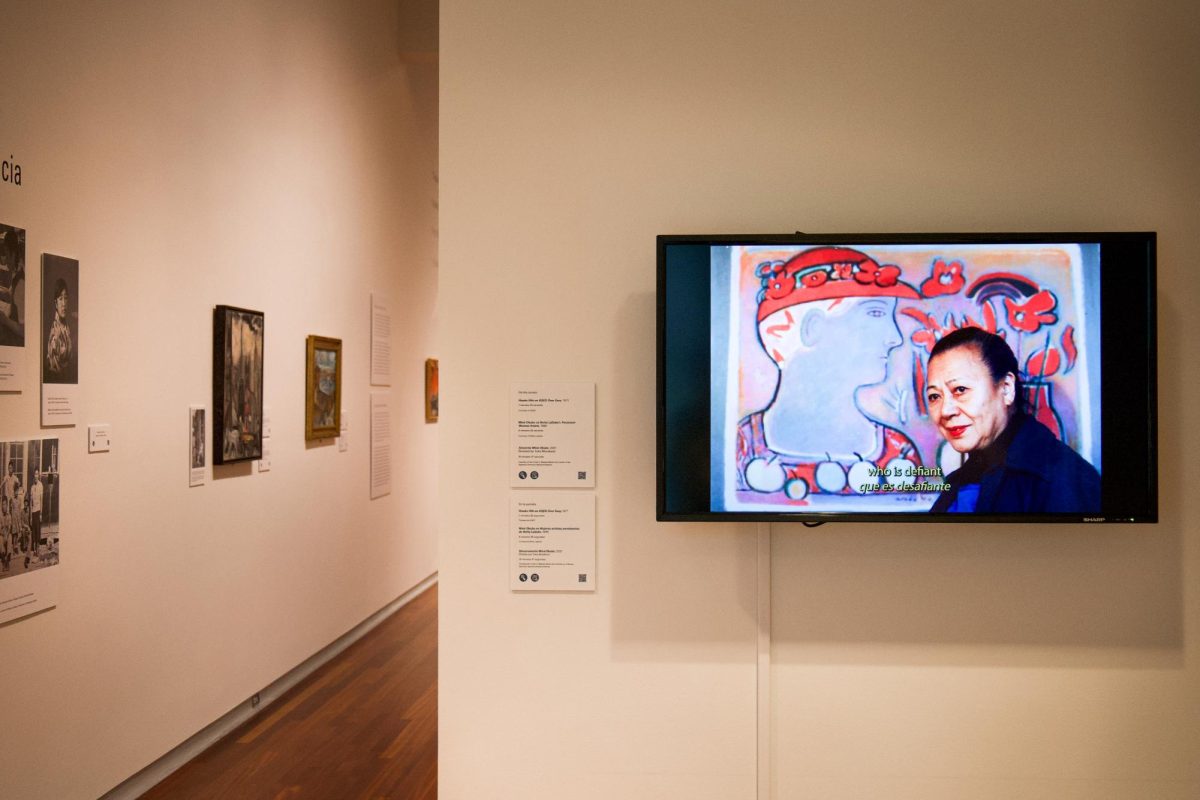
A Reflection of their Experience
Hisako Hibi came to the United States in 1920 from Fukui, Japan, and also studied art at the California School of Fine Arts in San Francisco. The power of her art comes across when comparing landscapes she painted before, during and after her time imprisoned at the Topaz internment camp.
“Spring II” (1940) is a landscape of an open field. The scene is filled with trees and shrubbery in so many shades of green. The brown soil in the field looks promising, like an abundance of things can grow there.
“White heat” (June 1943) is a picture of her view at Topaz. Everything, except for the buildings, is white. The piece portrays the harsh desert of Utah, a stark contrast to the lush “Spring II” (1940).
“Eastern sky 7:50 A.M.” (Feb. 25, 1945) is another painting of her view at Topaz. Filling the canvas with intensely saturated shades of red, the scene comes off angry, a reflection of her feelings of the internment camp and the war.
“Frightful New York” (1946) is one of her less detailed paintings. Everything is dark and grey. The towering thick lines depicting skyscrapers can be compared to prison bars. Perhaps this is a reminder that there is darkness and evil everywhere. Or perhaps viewing life as dark and frightful is the result of her time imprisoned in the internment camp.
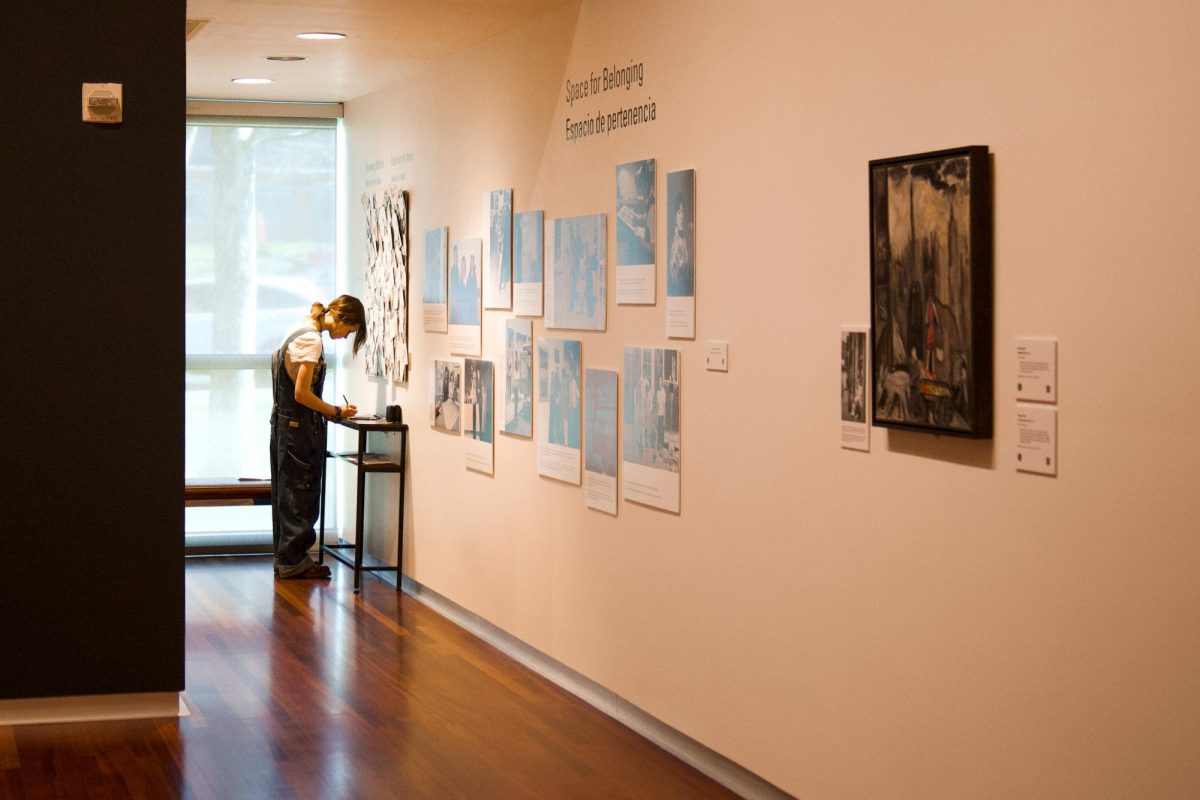
An Abstract Perspective
Miné Okubo is a Japanese American who was also imprisoned at the Topaz internment camp.
Her style is more abstract, allowing her to portray emotions that evoke empathy from the viewer. In two of her “untitled” (1943) pieces — charcoal drawings on paper — she depicts prisoners of Topaz as big and round, as if they are people with space to fill.
While she draws thick lines horizontally across the subjects, she also uses the edges of the paper as an implied border. Okubo bends and curves the subjects to fit inside the implied cage. In one of the drawings, two grown subjects are curved around a smaller subject who is standing up straight, portraying the effort of parents protecting their children. In the other drawing, the faces of the subjects are distorted, portraying the loss of the sense of self due to imprisonment and the overall emotional toll of the war.
Her post-war art remained abstract, but the shapes got bigger and the colors became more saturated, portraying the hope of life after the darkness of the war.
“Pictures of Belonging” will be displayed until June 30 before it will continue its national tour. Reservations for a curator tour with Dr. ShiPu Wang on May 15 at 6:30 p.m. can be scheduled on the Utah Museum of Fine Arts website.


